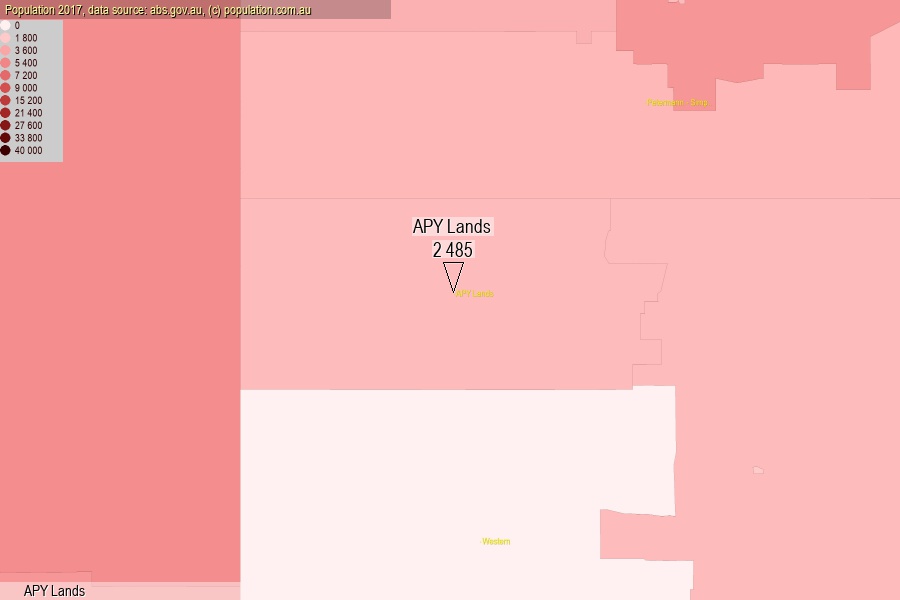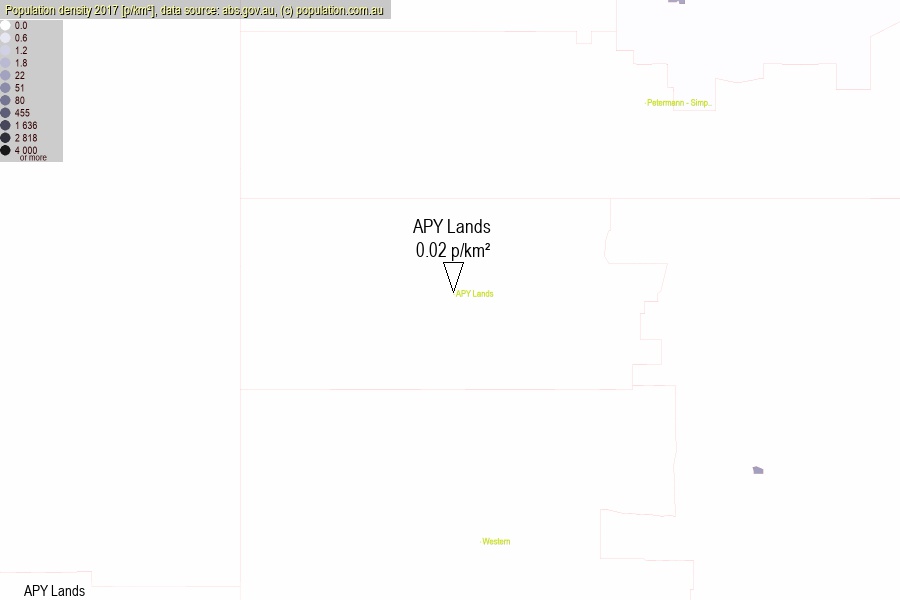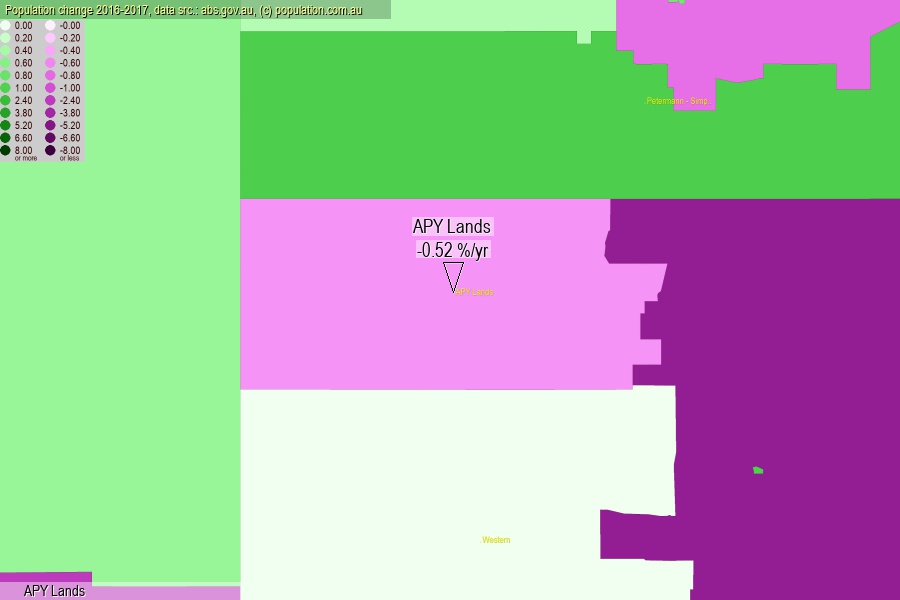 population.com.au
population.com.auLast official estimated population of APY Lands (as Statistical Area Level 2) was 2 485 people (on 2017-06-30)[2]. This was 0.01% of total Australian population and 0.143% of SA population. Area of APY Lands is 102 364.10 km², in this year population density was 0.02 p/km² . If population growth rate would be same as in period 2016-2017 (-0.52%/yr), APY Lands population in 2025 would be 2 383. [0]



Click to enlarge. APY Lands is located in the center of the images.
Population [people], population density [p./km²] and population change [%/year] [2]
View borders » (new window) [4]
[1991-1992] -3.24 %/Yr.
[1992-1993] -3.13 %/Yr.
[1993-1994] -1.96 %/Yr.
[1994-1995] -2.67 %/Yr.
[1995-1996] -1.49 %/Yr.
[1996-1997] +0.54 %/Yr.
[1997-1998] +0.35 %/Yr.
[1998-1999] +0.69 %/Yr.
[1999-2000] +0.76 %/Yr.
[2000-2001] +0.57 %/Yr.
[2001-2002] -2.33 %/Yr.
[2002-2003] -2.15 %/Yr.
[2003-2004] -2.91 %/Yr.
[2004-2005] -3.24 %/Yr.
[2005-2006] -3.31 %/Yr.
[2006-2007] +1.82 %/Yr.
[2007-2008] +2.72 %/Yr.
[2008-2009] +2.48 %/Yr.
[2009-2010] +3.39 %/Yr.
[2010-2011] +3.91 %/Yr.
[2011-2012] -0.34 %/Yr.
[2012-2013] -1.09 %/Yr.
[2013-2014] -0.65 %/Yr.
[2014-2015] -1.42 %/Yr.
[2015-2016] -2.73 %/Yr.
[2016-2017] -0.52 %/Yr.
[0] Calculated with linear interpolation from officially estimated population
[1] Read more about SA2 and Australian Statistical Geography Standard (ASGS) on abs.gov.au
[2] Population data from Australian Bureau of Statistics (Population and density: 2017; change: 2016-2017)
[3] Digital Boundaries: Australian Statistical Geography Standard (ASGS) 2016.
[4] Border coordinates are simplifyed using Ramer-Douglas-Peucker algorithm.